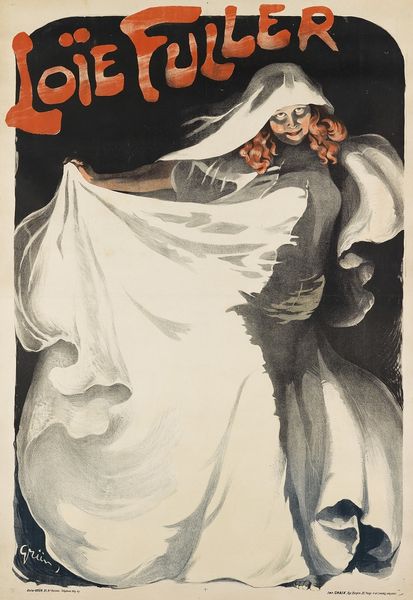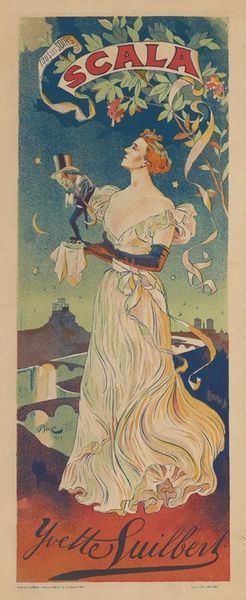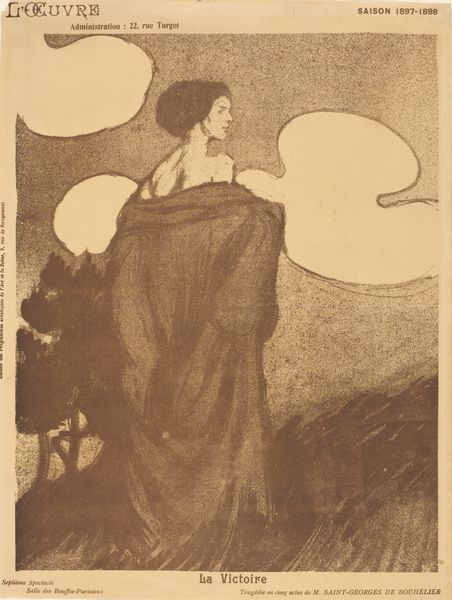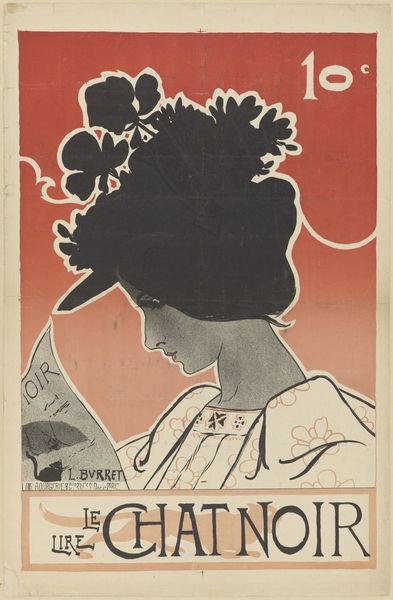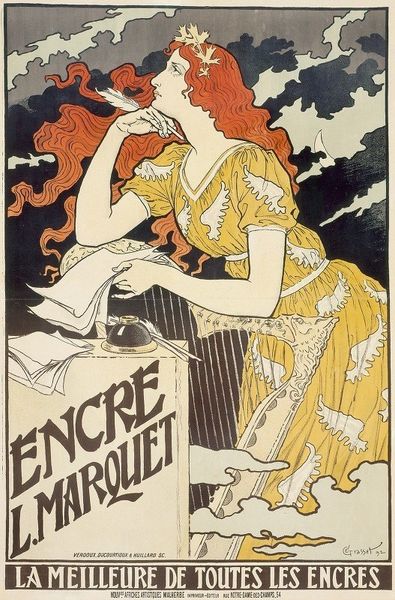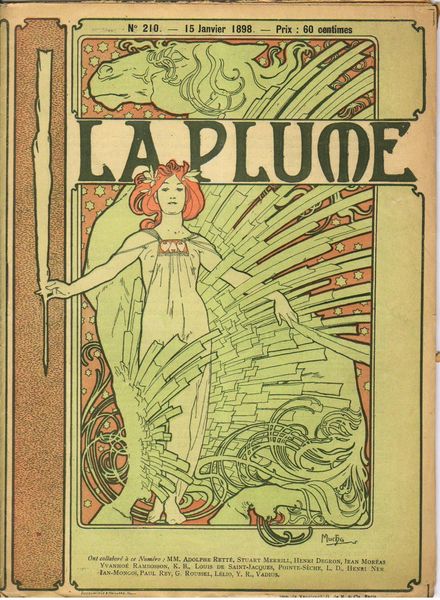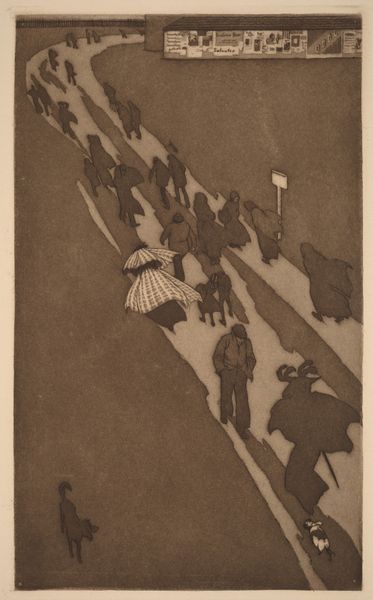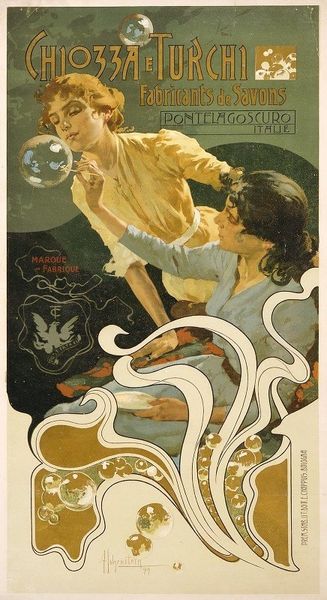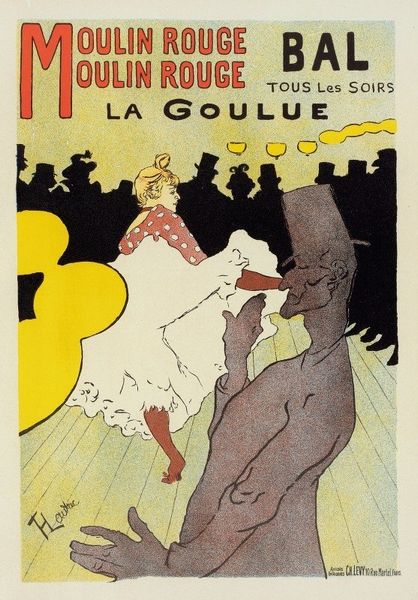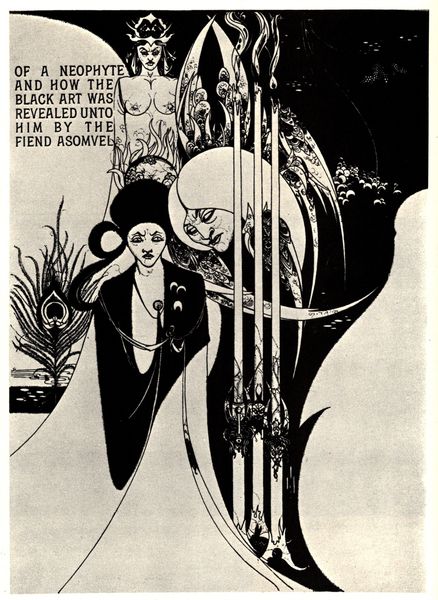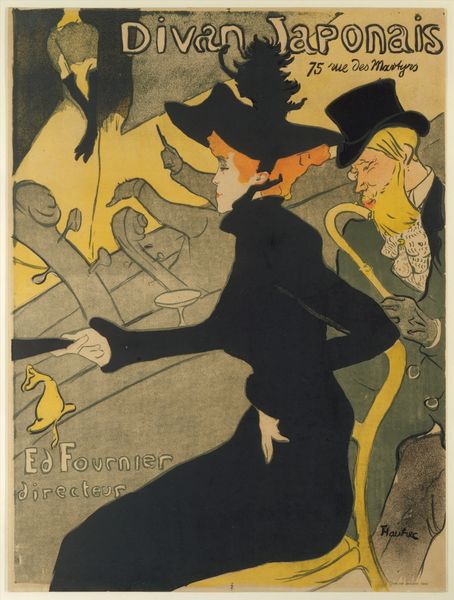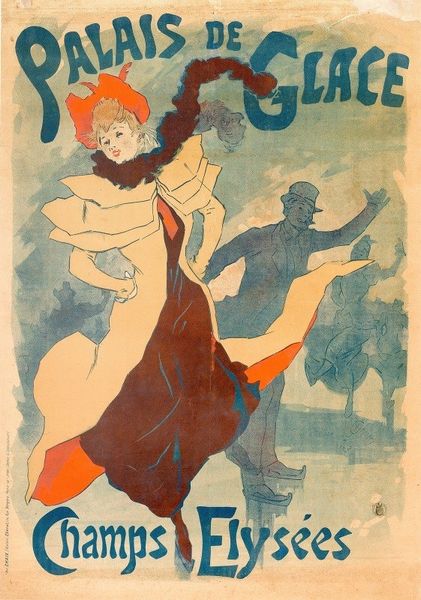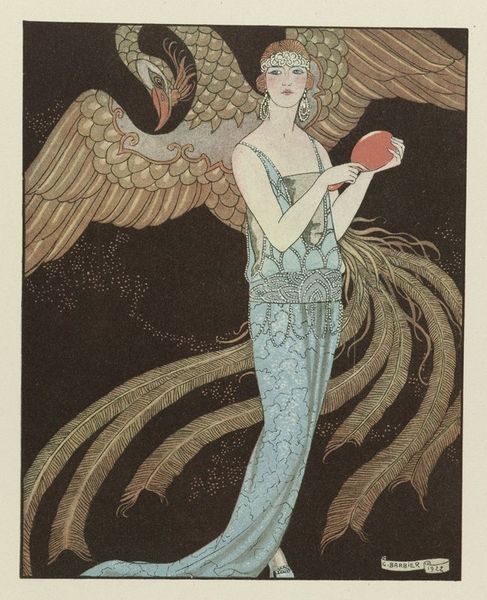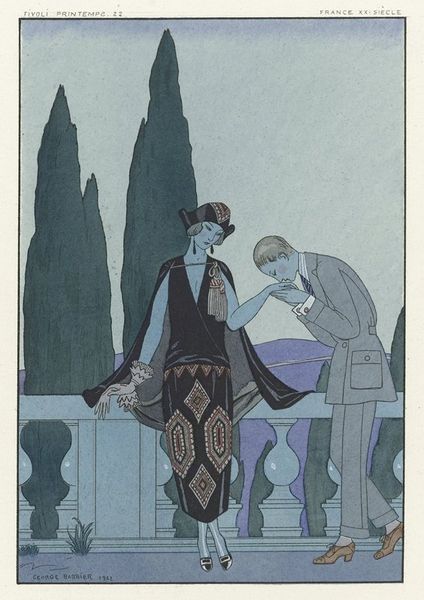
Exposition Universelle-Palais de l’Optique La Grande lunette de 1900 1900
0:00
0:00
lithograph, color-lithograph, print, poster
#
art-nouveau
#
lithograph
#
color-lithograph
# print
#
france
#
cityscape
#
watercolour illustration
#
nude
#
poster
Dimensions: 50 11/16 × 36 3/4 in. (128.7 × 93.3 cm)
Copyright: No Copyright - United States
Editor: Here we have Georges Paul Leroux’s color lithograph, "Exposition Universelle-Palais de l’Optique La Grande lunette de 1900", made in 1900. It really grabs my attention with the striking contrast between light and dark. What structural elements do you find most compelling in this print? Curator: The composition is primarily defined by the dichotomy between the solid geometric forms below and the soft organic shapes above. Note the tension created between the sharp architectural rendering of the Palais and the fluid drapery of the figure. The circle is of particular importance, a flat abstract plane amidst detailed representational forms. Editor: I see what you mean. The contrast is not just light and dark but also hard and soft, structured and free-flowing. Can you elaborate on the semiotics? What does the circle symbolize, or perhaps, represent within this structural composition? Curator: The large disc acts as a focal point, mediating between the architectural rigidity and the draped figure, but the surface plane of that disc competes with the recession implied by the building and figures. It is an assertion of two-dimensionality within an image striving for perspectival depth. Also, the figure supporting the disc is crowned. Note the art nouveau design and typography. How does that interplay with the thematic construction? Editor: Now that I consider that crown as another circle on the head of a person, supporting another bigger circle in the hands, the surface tension with depth appears amplified! Thanks! Curator: Precisely. These juxtapositions of space and surface are fundamental to this print's visual grammar. And indeed, it shows us the vital power of signs, symbols, and intrinsic structures to generate deeper comprehension of a print that may look ‘superficial’ at first glance!
Comments
minneapolisinstituteofart almost 2 years ago
⋮
A top attraction at the 1900 Exposition Universelle in Paris was La Grande Lunette, a giant telescope in the Palais de l’Optique (Palace of Optics). The greatly magnified views of the moon it provided proved wildly popular with the public. Georges Leroux designed the lunette’s advertising poster. In a preparatory drawing for the poster (see Mia 2011.99), he worked out the contours and lighting of the woman, seen as a half nude gracefully leaning toward an unseen source of light. The application of soft charcoal on highly textured paper yielded a sensual softness throughout the image. This finished poster reveals Leroux’s rationale for the woman’s pose: she is bending down to hold the luminous orb in her hands. Leroux made clear his seductive intention with the addition of a young man in the corner. By lowering the moon toward him, the woman demonstrates how technology enables us to experience what once existed only in our dreams. With stars sparkling above the glowing Palais de l’Optique, Leroux set the stage for visitors to the fairgrounds—a place where the fantasies of technology and romance intertwine.
Join the conversation
Join millions of artists and users on Artera today and experience the ultimate creative platform.
